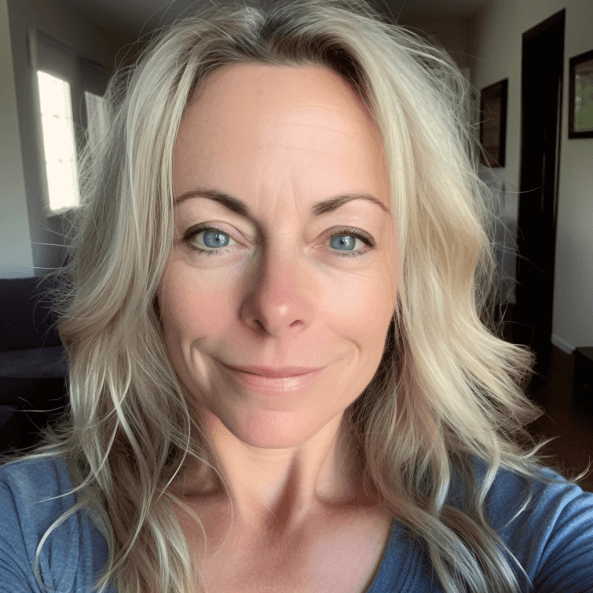Dyson V11 Origin Cordless Vacuum, Nickel/Blue
- Versatile and cordless for whole-home deep cleaning.
Shark NV752 Rotator Powered Lift-Away TruePet Upright Vacuum with HEPA Filter, Large Dust Cup Capacity, LED Headlights, Upholstery Tool, Perfect Pet Power Brush & Crevice Tool, Bordeaux
- 2-IN-1 POWERED LIFT-AWAY TECHNOLOGY: Allows you to lift the pod away to deep-clean hard-to-reach areas, like under furniture, while the powered brushroll keeps spinning.
O-Cedar EasyWring Microfiber Spin Mop, Bucket Floor Cleaning System, Red, Gray, Standard
- HANDS-FREE WRINGING: Our exclusive mop bucket design features a built-in wringer that allows for hands-free wringing while Splash Guard keeps water splash and spray inside the bucket when wringing or when transporting the bucket from room to room
Electric Spin Scrubber for Cleaning Bathroom: Cordless Power Shower Scrubber - Electric Cleaning Brush for Tile Tub
- Multi-Surface Efficiency: Experience a deep clean across various surfaces with our Electric Spin Scrubber. Perfect for tiles, windows, bathtubs, toilets, and kitchen sinks. Effortlessly tackle dirt and grime where you need it most.
AIDEA Microfiber Cleaning Cloths, 50PK, Microfiber Towels for Cars, Premium All Purpose Car Cloth, Dusting Cloth Cleaning Rags, Absorbent Towels for SUVs, House, Kitchen, Window, 12"×12"
- Super Absorbent: Experience the excellent quality of AIDEA all-purpose microfiber cleaning cloths; made from 87% polyester and 13% polyamide; offering exceptional absorbency and quickly wicking away water to keep you dry; ideal for swiftly and safely removing dirt, grime, and liquids
Have you ever wondered how much vacuum it takes to boil water? You might be surprised to learn that boiling isn’t just about heat; it’s also about pressure. Imagine standing in your kitchen, trying to boil water for your favorite recipe, only to find it’s taking longer than expected.
Key Takeaways
- Understanding Vacuum Pressure: Vacuum pressure is crucial for boiling water, as it reduces the boiling point significantly, impacting cooking processes and recipes.
- Boiling Point Relationship: At sea level, water boils at 212°F (100°C). With increased vacuum pressure, boiling occurs at lower temperatures (e.g., 100°F at 29 inHg), enhancing cooking methods like sous vide.
- Factors Affecting Boiling Point: Atmospheric pressure, water impurities, vacuum levels, and container types all influence the boiling point of water, necessitating adjustments for optimal cooking results.
- Vacuum Applications in Cooking: Utilizing vacuum levels in cooking can improve flavor and texture, particularly in methods like sous vide, where precise temperature control is essential.
- Industrial Uses: Vacuum technology is vital in industrial kitchens for preserving food quality, packaging, and enhancing flavor concentration in products like jams and sauces.
Understanding Vacuum Pressure
Vacuum pressure plays a critical role in boiling water. By reducing pressure, you lower the boiling point, which can speed up cooking processes or impact recipes.
What Is Vacuum Pressure?
Vacuum pressure refers to the amount of pressure below atmospheric pressure. Each vacuum measurement unit, such as inches of mercury (inHg) or pascals (Pa), indicates the degree of vacuum. For example, a perfect vacuum reaches 0 inHg or 0 Pa, while everyday vacuums used in cooking typically range from 1 to 29 inHg. Vacuum pumps extract air from a sealed environment, creating this difference in pressure.
How Vacuum Pressure Affects Boiling Point
Vacuum pressure directly influences the boiling point of water. At sea level, water boils at 212°F (100°C) due to atmospheric pressure. However, as you reduce the pressure, water starts to boil at lower temperatures. For instance:





| Vacuum Pressure (inHg) | Boiling Point (°F) | Boiling Point (°C) |
|---|---|---|
| 0 | 212 | 100 |
| 10 | 194 | 90 |
| 20 | 176 | 80 |
| 29 | 100 | 37 |
At 29 inHg, water boils at around 100°F (37°C). This effect is useful in various cooking methods, such as sous vide, where lower boiling points help preserve flavors and nutrients. Understanding vacuum pressure enables you to adjust cooking temperature and time for optimal results.
The Science Behind Boiling Water
Understanding boiling water involves grasping the relationship between pressure and temperature. Lowering the pressure allows water to reach its boiling point at a lower temperature, which significantly affects cooking techniques.
The Concept of Boiling Point
Boiling point refers to the temperature at which a liquid turns into vapor. For water, this standard boiling point sits at 212°F (100°C) under normal atmospheric pressure. When you decrease the pressure, such as in a vacuum, this temperature drops. For instance, at a vacuum pressure of 29 inHg, water boils at approximately 100°F (37°C). Grasping this concept helps you appreciate how pressure changes impact various cooking methods.
Factors Influencing Boiling Point
Several factors influence the boiling point of water:
- Atmospheric Pressure
Higher atmospheric pressure raises the boiling point, while lower pressure lowers it. Mountains experience this effect, as water boils at lower temperatures at high altitudes. - Impurities in Water
Adding substances, like salt or sugar, alters the boiling point. Salt, for example, increases the boiling point due to the higher energy needed for the water to boil. - Vacuum Levels
Different vacuum levels directly impact boiling temperatures. You can adjust cooking methods based on these variations for optimized results. - Container Type
The material and design of cookware can influence heat distribution and boiling efficiency. For example, pressure cookers utilize high pressure, allowing food to cook faster.
By understanding these factors, you can effectively use vacuum pressure in your cooking experiments, enhancing flavors and achieving precise results.
Calculating the Required Vacuum
Understanding how much vacuum to apply in boiling water involves knowing the relationship between vacuum levels and temperature. This relationship is essential for precise cooking results.
Vacuum Levels and Their Corresponding Temperatures
Different vacuum levels correspond to specific boiling points of water. Here’s a breakdown of common vacuum levels and their boiling point temperatures:
| Vacuum Level (inHg) | Boiling Point (°F) | Boiling Point (°C) |
|---|---|---|
| 0 | 212 | 100 |
| 10 | 194 | 90 |
| 20 | 176 | 80 |
| 25 | 164 | 73 |
| 29 | 100 | 37 |
At sea level, water typically boils at 212°F (100°C). As the vacuum increases, the boiling point decreases significantly. For example, at a vacuum level of 29 inHg, water reaches its boiling point at 100°F (37°C). Utilizing vacuum conditions like these can enhance the cooking process, especially in sous vide methods.
Practical Examples of Vacuum Application
Applying various vacuum levels can drastically change how you cook. Here are practical examples:
- Sous Vide Cooking: Set your sous vide machine to 130°F (54°C) to cook steak. Using a vacuum sealer ensures minimal air, allowing the water to maintain the temperature efficiently.
- Making Jams: Vacuum processing can help make jams at a lower temperature, preserving flavor and nutrients. For instance, using a vacuum level of 25 inHg can allow the mixture to boil at 164°F (73°C), retaining better taste.
- High-Altitude Cooking: In high-altitude areas, water boils at lower temperatures due to reduced atmospheric pressure. Using a vacuum at lower altitudes can mimic these conditions, achieving similar cooking results.
Understanding vacuum levels lets you control boiling temperatures precisely, thereby maximizing flavor and texture in your cooking.
Applications of Vacuum in Cooking
Vacuum techniques in cooking enhance flavor, texture, and preservation. Understanding these applications can elevate your culinary skills and improve meal results.
Sous Vide Cooking
Sous vide cooking involves sealing food in airtight bags and cooking it in water at precise temperatures. By utilizing vacuum pressure, you maintain consistent heat and prevent overcooking. The vacuum also ensures that natural flavors and nutrients remain locked in. For instance, cooking chicken breast at 140°F (60°C) for one to two hours results in juicy, tender meat. As you control the temperature effectively, you maximize flavor while achieving perfect doneness every time.
Industrial Applications
In industrial kitchens, vacuum technology streamlines food processing and packaging. Techniques like vacuum sealing prolong shelf life by removing air and inhibiting bacterial growth. This method is essential for preserving freshness in products like cured meats and cheeses. Additionally, vacuum cooking aids in the production of jams and sauces by controlling moisture and flavor concentration. For instance, reducing fruit preserves in a vacuum environment intensifies flavor while preventing caramelization. Understanding these industrial applications can enhance efficiency and product quality in culinary ventures.
Conclusion
Understanding how vacuum affects boiling water can truly transform your cooking experience. By mastering the principles of pressure and temperature you can unlock new methods that enhance flavors and textures in your meals. Whether you’re experimenting with sous vide techniques or exploring industrial applications, the benefits of vacuum technology are clear.
So next time you’re in the kitchen remember that a little knowledge about vacuum pressure can go a long way in elevating your culinary creations. Enjoy the journey of cooking with newfound insights and watch your dishes shine like never before.
Frequently Asked Questions
What is boiling water and how does it work?
Boiling water is the process where water turns into vapor when heated to its boiling point. This temperature depends on pressure; higher pressure raises the boiling point, while lower pressure lowers it.
What is vacuum pressure in relation to boiling water?
Vacuum pressure refers to a reduction in atmospheric pressure around water. Lowering this pressure decreases the boiling point, allowing water to boil at lower temperatures, which can influence cooking times and results.
How does vacuum pressure affect cooking?
By reducing ambient pressure, vacuum pressure enables water to boil at lower temperatures, which can enhance cooking methods like sous vide. This method helps preserve flavors and nutrients in food, resulting in better taste and texture.
What is sous vide cooking?
Sous vide is a cooking technique where food is sealed in a vacuum bag and cooked at a precise, low temperature in water. This method ensures even cooking and retains moisture, producing tender, flavorful dishes.
How is vacuum pressure measured?
Vacuum pressure is typically measured in units like inches of mercury (inHg) or pascals (Pa). Different vacuum levels affect the boiling point of water, thereby influencing cooking outcomes.
What are the benefits of using vacuum technology in industrial kitchens?
Vacuum technology in industrial kitchens helps extend shelf life, improve product quality, and maintain freshness. It also aids in precise food processing, packaging, and can enhance overall culinary effectiveness.
Can understanding vacuum pressure improve my cooking?
Yes, understanding vacuum pressure can greatly improve your cooking skills. It helps in techniques like sous vide, allowing for better flavor preservation, enhanced texture in food, and more precise cooking results.










